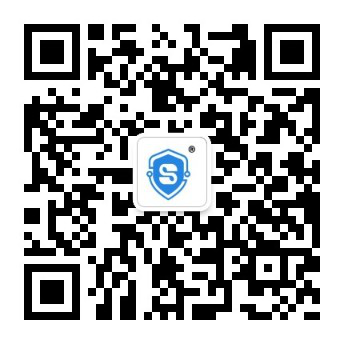南昌市場調查公司上書房信息咨詢開展廣告傳播效果評估
廣告傳播效果評估是對廣告傳播活動的效果和影響進行評估和分析的過程。評估廣告傳播效果可以涵蓋以下內容:
1.媒體覆蓋和曝光:評估廣告在不同媒體渠道上的覆蓋范圍和曝光程度,包括廣告在電視、廣播、印刷媒體、數字媒體等平臺上的曝光次數和持續時間。
2.目標受眾觸達:評估廣告在目標受眾中的觸達程度,包括廣告在特定受眾群體中的知曉度、接觸率和頻次。
3.品牌認知和認可:評估廣告對品牌認知和認可度的影響,包括目標受眾對品牌名稱、標識、口號等要素的認知和記憶。
4.消費者行為影響:評估廣告對消費者行為的影響程度,包括廣告對購買意向、購買決策和消費者行為的激發和引導作用。
5.情感和態度影響:評估廣告對目標受眾情感和態度的影響,包括廣告在情感上所引發的反應和對品牌形象和態度的塑造作用。
6.傳播效率和效果:評估廣告傳播的效率和效果,包括廣告投放的成本效益、傳播效果的累積和持久性。
7.創意和設計評估:評估廣告的創意和設計質量,包括廣告的視覺效果、文案、圖像和音頻元素的吸引力和影響力。
8.社會影響和公眾反應:評估廣告對社會的影響和公眾反應,包括廣告對社會議題的關注度、公眾對廣告內容的接受程度和反饋。

廣告傳播效果評估可以采用定量和定性的研究方法,如調查問卷、焦點小組討論、市場調研、廣告追蹤和數據分析等,以獲取客觀和全面的評估結果。根據具體的廣告目標和評估需求,可以選擇相應的評估指標和方法進行評估分析。
本文上書房信息咨詢(SSF)出品,歡迎轉載,請注明出處。中國獨立第三方調研機構上書房信息咨詢與多家知名品牌、廣告商合作多年,從品牌定位、目標消費者、及品牌鋪貨渠道等各方面研究品牌價值,開展品牌測試、廣告效果評估、廣告人流量調研、廣告價值評估等。十五年來針對不同行業、不同對象進行了研究衍生,完成品牌研究案例1,000例,采集有效樣本1,000,000份,具有強大的專業能力,收獲了客戶的眾多好評。
南昌市場調查公司上書房信息咨詢(SSF)采用經驗豐富的質控員對每一位訪問員提交的現場記錄資料進行甄別與篩選。通常,一個全國性的委托項目會設置8-10名督導,他們統一向1名項目總監匯報日常工作。深圳第三方評估市場調查公司上書房信息咨詢在2022年服務客戶超過100家,包含了開展購物滿意度調查、上海第三方滿意度測評、景區滿意度調查、滿意度調查問卷、西安市場調研公司、湖南市場調查公司、廣州醫院滿意度測評、成都窗口滿意度測評、滿意度調查報告、佛山市場調查、深圳地鐵廣告效果評估、無錫市場調查公司、內部員工滿意度調查公司、社會滿意度調查、北京專業市場調查、上海小區業主滿意度調查等多種類型,調查項目覆蓋了國內160余個城市。
Evaluation of Advertising Communication Effectiveness
Evaluation of advertising communication effectiveness refers to the process of assessing the impact and effectiveness of advertising messages and campaigns in reaching and influencing the target audience. The evaluation aims to determine the extent to which the advertising communication has achieved its objectives and whether it has effectively conveyed the intended message to the audience.
The evaluation of advertising communication effectiveness may include the following aspects:
1.Message Recall and Recognition: Assessing the audience's ability to recall and recognize the advertising message or elements such as brand name, slogan, or visual cues.
2.Brand Awareness and Perception: Measuring the level of brand awareness and how the advertising has influenced the audience's perception and associations with the brand.
3.Message comprehension: Evaluating the audience's understanding and comprehension of the advertising message, including key information, value propositions, or calls to action.
4.Attitude and Behavior Change: Assessing the impact of the advertising on the audience's attitudes, beliefs, and intentions, as well as any observed changes in consumer behavior or purchase decisions.
5.Emotional Response: Evaluating the emotional response elicited by the advertising, such as joy, surprise, or empathy, and examining how it influences brand perception and engagement.
6.Media Reach and Frequency: Assessing the reach and frequency of the advertising across different media channels and platforms to understand its exposure to the target audience.
7.Social Media Engagement: Evaluating the level of audience engagement and interaction with the advertising on social media platforms, including likes, shares, comments, and user-generated content.
8.Return on Investment (ROI): Measuring the financial impact and return on investment of the advertising campaign, including metrics such as sales uplift, website traffic, or customer acquisition.
Evaluation of advertising communication effectiveness can be conducted through various research methods, including surveys, focus groups, interviews, eye-tracking studies, online analytics, and market research data analysis. The choice of methods and metrics depends on the specific objectives, target audience, and available resources for evaluation.





